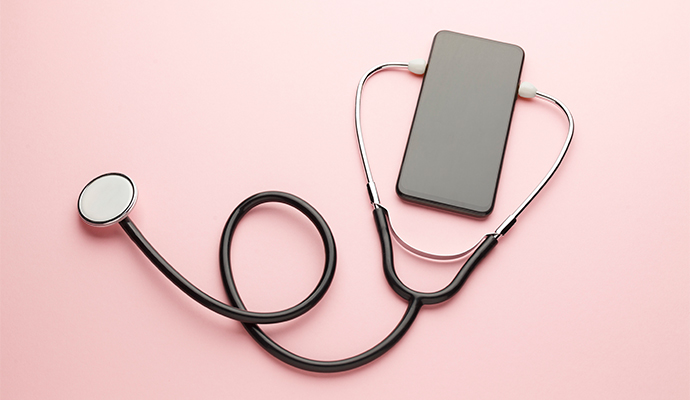In-Person Follow-ups Higher After Telehealth Than Office Visits
In-person follow-up rates were higher after telehealth than in-person office visits and linked to cases involving physical pain, a new study reveals.

Source: Getty Images
- New research shows that the rate of in-person follow-up visits was low following phone and video visits for primary care but still higher than after in-person appointments.
The study, conducted by the Kaiser Permanente Division of Research, was published in the Annals of Internal Medicine. The research team aimed to examine treatment and follow-up visits between video or telephone-based telehealth and in-person office visits for primary care.
The researchers conducted a retrospective study using administrative and EHR data. They gathered data for 1.5 million adult patients receiving primary care at a large, integrated healthcare system between April 2021 and December 2021. About 26.5 percent of the patients were 65 or older, 54.9 percent were female, and 31.8 percent had a chronic health condition. Additionally, 22.2 percent were Asian, 7.4 percent were Black, 22.3 percent were Hispanic, and 46.5 percent were White.
The study assessed various treatment outcomes for in-person and telehealth visits, including medication or antibiotic prescribing. Researchers also examined follow-up visits, which included in-person visits to the primary care office and emergency department within seven days.
Of 2.3 million primary care visits, 50.8 percent occurred via telehealth, with 19.5 percent via video and 31.3 percent via the telephone.
The study shows that 6.2 percent of video visits and 7.6 percent of telephone visits resulted in an in-person follow-up visit within seven days. While these rates are low, they are higher than the seven-day in-person follow-up rate for in-person visits at 1.3 percent.
Further, 1.6 percent of in-person visits, 1.8 percent of video visits, and 2.1 percent of telephone visits resulted in an in-person emergency department (ED) visit.
The study shows that medication prescribing was similar across settings, with 46.8 percent of in-person visits, 38.4 percent of video visits, and 34.6 percent of telephone visits resulting in prescriptions. Antibiotic prescribing was also similar across the board, with antibiotics being prescribed in 6.6 percent of in-person visits, 6.6 percent of video visits, and 6.7 percent of telephone visits.
“We aren’t seeing overtreatment in the setting of virtual care, given the potential for a provider to order a test or antibiotic to be on the safe side, without a physical exam,” said Anjali Gopalan, MD, a Kaiser Permanente research scientist and senior physician with The Permanente Medical Group, in the press release. “The ideal future state will be finding the balance in choosing the primary care modality that reflects both patient preference for convenience along with clinical appropriateness.”
In addition to overall follow-up rates, researchers studied clinical characteristics associated with virtual care follow-ups. They found that in-person follow-ups were most likely following virtual visits for abdominal or musculoskeletal pain and least likely after virtual visits for mental health.
“This finding makes sense because a clinician may want to follow-up with a physical exam for someone with continuing physical pain, while a mental health-related visit may more often be addressed virtually,” said study lead author Mary Reed, DrPH, a research scientist at Kaiser Permanente, in the press release. “The reassuring thing is that the degree to which patients return to care after telemedicine is pretty limited.”
The study adds to prior Kaiser Permanente research on in-person follow-up rates after telehealth visits published in January.
A research team led by Reed assessed in-person follow-ups after telephone-only and video-only telehealth visits early in the pandemic. They examined 734,442 primary care-focused telehealth visits between March 16, 2020, and October 31, 2020. Of the total number of visits, 58.4 percent were conducted via the telephone.
Overall, in-person follow-up visits and ED visits were rare following both video and telephone-based visits. However, the adjusted rates of seven-day in-person follow-up visits were 0.7 percent lower after video visits compared with telephone visits. Similarly, adjusted emergency department visits and hospitalization rates were lower following video visits than telephone visits.
